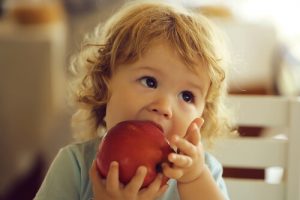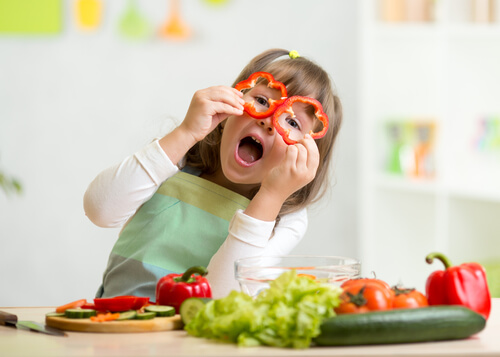Foods to Help Prevent Anemia

There are several foods you can include in your children’s meal to help prevent anemia.
Anemia usually appears due to a lack of hemoglobin, which is a molecule that is responsible for transporting oxygen in the blood.
A lack of nutrients or hemoglobin in your children’s diet can cause them to get sick. That’s why it’s essential that you know what to do in these cases.
Symptoms of anemia
Here’s a list of the common symptoms of anemia. If your children shows any of these signs, it’s best if you visit your pediatrician.
- Begins to act irritably
- Has difficulty breathing
- Eats less food than before
- Feels weak or tired all the time
- Tongue is sore
- Has headaches or dizziness
- More severe anemia may present: brittle nails, bluish or pale in color.
Anemia can also be caused by a lack of vitamin B12 or folic acid.
Foods to prevent anemia
There are several foods to prevent anemia. Here we’ll explain in detail which ones you should incorporate into your children’s diet.
Fruits
Fruits are one of the most beneficial foods for children’s health. Apples and tomatoes are rich in iron, so they’re ideal for preventing anemia.
Other iron-rich foods include plums, bananas, lemons, grapes, oranges, figs, carrots and raisins. It’s much better if they’re consumed in large quantities.
Honey
Honey is a potent source of iron, copper and manganese. This combination helps with the synthesis of hemoglobin, which makes honey a powerful weapon against anemia.
You can integrate it into your child’s snack or give it to them at breakfast.

Meat
Lamb, beef and other types of red meat are rich in iron. They also contain heme-iron, which is rapidly absorbed by the body’s cells.
Beef liver has more than 600% of the daily requirements of this mineral. Meat is also a source of vitamin B12.
Seafood
Fish is a wonderful food to prevent anemia because it contains a large amount of iron.
Some of the most popular fatty fish such as salmon and tuna, and seafood such as mussels and oysters, are rich sources of this mineral.
Eggs
Eggs are a rich source of protein and contain a large amount of antioxidants, which helps the body to stock up on vitamins.
A large egg contains 1 mg of iron, so eating eggs daily helps prevent the onset of anemia.
Vegetables
Vegetables such as spinach, lettuce, broccoli, celery, beetroot and kale have a lot of iron content that helps to increase energy.
In addition, vegetables contain vitamin B12, folic acid and other nutrients that help the body recover quickly from anemia.

Legumes and nuts
Lentils, chickpeas, beans and soybeans cannot be missing from a child’s diet, especially if they show symptoms of anemia.
Other foods they can’t miss out on are whole grains, dried dates, peanuts, walnuts and almonds, because they’re fundamental in combating or preventing this disease.
Oats
About 100 g of oatmeal provides 4.7 mg of iron, which exceeds the quantity found in meat (3 mg). One cup has 60% of the daily requirements of this mineral.
Red beets
Red beets are also ideal for fighting anemia. Beets are high in iron, vitamin C, vitamin B, calcium and folates, which give them great anti-anemic action.
Beets also stimulate the production of blood cells in the bone marrow.
Proper nutrition and the integration of these foods into your children’s diet will prevent them from suffering from anemia and other diseases.
If your child already suffers from anemia and develops complications, it is important to consult with your pediatrician for an evaluation and to learn what to do next.
All cited sources were thoroughly reviewed by our team to ensure their quality, reliability, currency, and validity. The bibliography of this article was considered reliable and of academic or scientific accuracy.
- Vieth J., Lane DR., Anemia. Hematol Oncol Clin North Am, 2017. 31 (6): 1045-1060.
- Wang M., Iron deficiency and other types of anemia in infants and children. Am Fam Physician, 2016. 93 (4): 270-8.
This text is provided for informational purposes only and does not replace consultation with a professional. If in doubt, consult your specialist.
